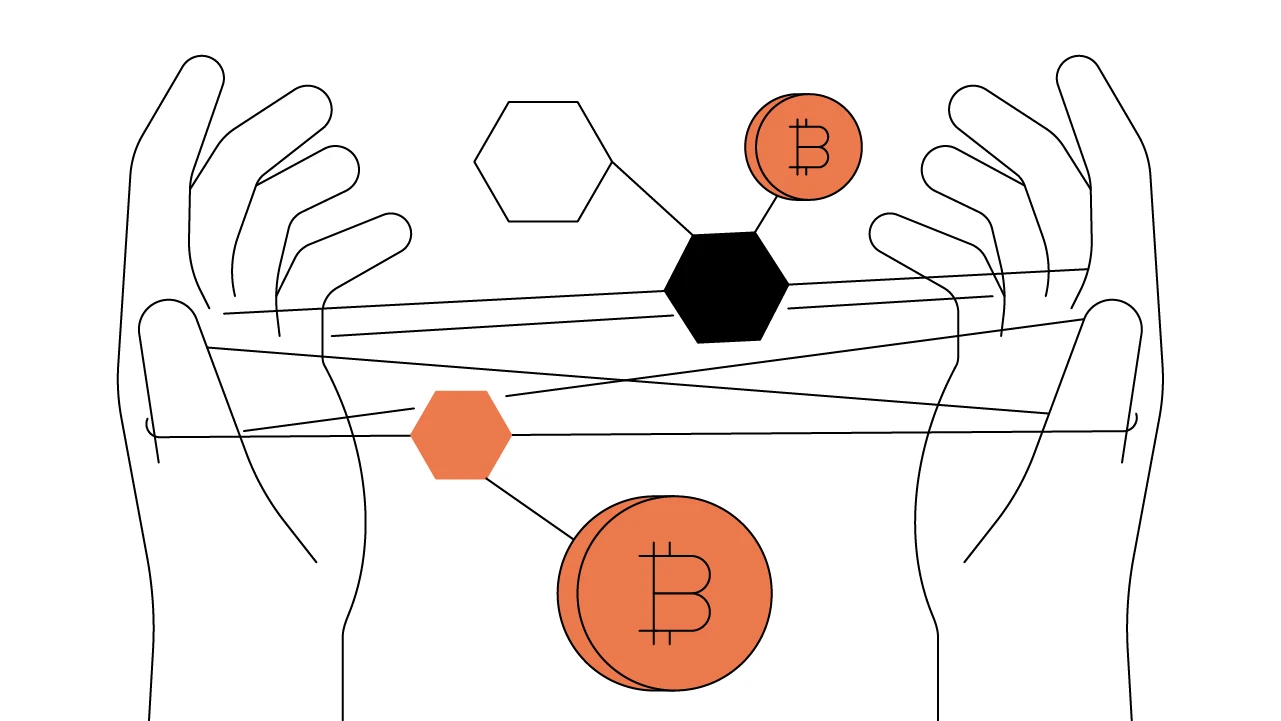Contents
Crypto Airdrops
A look at the pros and cons of free, large-scale crypto distributions for both projects and consumers.
Updated February 26, 2025 • 5 min read

Summary
Cryptocurrency airdrops — the act of depositing cryptocurrency in public crypto wallets — are used as a tool for marketing, liquidity creation, and network bootstrapping for many types of blockchain projects. Here we explore cryptocurrency airdrop programs — how they work, what they try to achieve, and we cite some notable examples.
What Is an Airdrop?
A cryptocurrency airdrop is an initiative undertaken by a crypto project with a native coin or token to distribute its cryptocurrency to current or potential users — usually for free — in a digital asset giveaway. Airdrops serve multiple purposes: marketing, creating liquidity, and helping to establish equitable governance mechanisms by decentralizing the crypto holdings of a platform. Crypto airdrop recipients are typically determined based on prior or current participation in another existing network such as Bitcoin or Ethereum, or through a crypto exchange or wallet.
Receiving coins or tokens via an airdrop is a relatively simple process. Often, you just need to provide a valid receiving wallet address to the project that is distributing the tokens. Some initiatives require that you engage with the party carrying out the airdrop by sharing a promotional social media post, completing a survey, or subscribing to a mailing list. It’s also possible to receive an airdrop simply by being a user of an exchange participating in a crypto airdrop.
Unlock the future of money on Gemini
Start your crypto journey in minutes on the trusted crypto-native finance platform
Why Do Crypto Airdrops Happen?
Cryptocurrency airdrops distribute free cryptocurrencies or tokens in exchange for minimal effort on the part of the recipients — so what’s the catch? And why would a new blockchain network with a fledgling cryptocurrency or token send out a portion of its network’s native resources for free? To understand the value proposition for airdrop distributors and receivers alike, it helps to understand the underlying structure of a blockchain network.
A blockchain platform is a distributed global infrastructure made up of decentralized nodes that share the responsibility of maintaining the network, verifying new transactions, and keeping a record of the entire blockchain. A network bolsters its security each time a new node is added because it is one more entity keeping record of the blockchain, which gives the blockchain another layer of redundancy and increases overall network participation with respect to consensus and governance. Network participation is generally a good indicator of the level of a network’s general security. The more nodes that comprise a decentralized network, the more difficult that network becomes to attack or compromise.
Airdrops are often intended to help a new crypto project kickstart the process of gaining both visibility and network participation. By widely distributing free coins or tokens to new recipients, a network can grow incredibly fast. Once a widely distributed crypto airdrop occurs, many people will own the new currency, potentially heightening general awareness of a particular project, increasing its popularity, and democratizing its ownership.
From the perspective of the recipient, many new users are likely motivated primarily by the financial gain — earning free crypto for doing relatively little in return — and may seek to liquidate airdropped assets quickly. However, there remains the possibility that a new user may learn about the project and decide to hold on to newly accrued assets, or even become a user of the airdropping platform. Some cryptocurrency airdrop programs have seen more success than others, but their success is typically more reflective of the value provided by the underlying project than the airdrop itself.
A Short History of Crypto Airdrops
The first cryptocurrency airdrop in history occurred in 2014. The project, Auroracoin, was designed to be a national cryptocurrency accessible in Iceland. Leveraging Iceland’s meticulous national records, Auroracoin distributed its native cryptocurrency AUR to the entire population of Iceland — dedicating 50% of its total coin supply to Icelandic citizens. Residents needed only to register in order to receive 31.8 AUR. While Auroracoin pioneered the first cryptocurrency airdrop, it ultimately fell short of achieving its lofty goal of becoming the first national cryptocurrency.
Auroracoin may have debuted the first cryptocurrency airdrop program, but soon other airdrops superseded it in size and recognition. The Stellar Development Foundation (SDF) was founded with the commitment to distribute 19% of its initial total supply of lumens (XLM), or 19 billion XLM, to people who held bitcoin (BTC). In 2016, it began doing just that. At first, the program was tested by giving away three billion XLM to BTC holders via various participating exchanges. Then in 2017, Stellar gave away the remaining 16 billion XLM in proportion to the amount of BTC that users held through various participating exchanges.
As you might expect, giving away such large sums for free garnered widespread media attention, even from major news sources outside the cryptocurrency space. Many news outlets publicized the airdrops as some of the largest consumer giveaways to ever take place.
Governance Token Airdrops
More recently, crypto airdrops have taken place as governance token distribution mechanisms, where users of particular platforms are retroactively rewarded with governance tokens in exchange for their early network participation. Governance tokens are notable because they give holders voting rights in the community-based decision-making process of a decentralized platform. Governance token airdrops have become a common trend in the DeFi ecosystem with participation from popular platforms like Uniswap, Curve, and 1inch.
The governance token airdrop model was popularized when the decentralized exchange (DEX) protocol Uniswap created its own governance token UNI in 2020, and airdropped 400 UNI tokens to anyone who had previously used the exchange. All in all, 400 UNI (worth about $1,400 at the time) were distributed to more than 250,000 accounts — airdropping a grand total of more than $350 million. The Uniswap airdrop was notable for its retroactive distribution structure. It also established blockchain airdrops as an effective way for platforms to distribute tokens to their community as a reward for their participation. While most airdrops delivered a few free coins or tokens worth a nominal amount, the UNI airdrop substantially compensated users.
Today, many people use social media and various websites to keep tabs on new airdrops — of which there have been thousands — either in hope of finding the next great cryptocurrency project, or simply to receive free assets.
Closing Considerations
Even if an airdropped cryptocurrency isn’t as successful as its distributors and recipients hope and it loses some of its value — it’s still free, right? Well, there are a few considerations to be aware of when it comes to airdrop programs. First, income received through airdrops is still subject to taxation, although the exact intricacies of taxability vary by jurisdiction. The amount received through an airdrop is typically small, but over time it can grow as a network grows, thus carrying a larger tax liability.
As always, the true success of a cryptocurrency boils down to the utility and value of its underlying project. However, it has already become abundantly clear thanks to established airdrops like the EOSIO airdrop, and the Stellar and Uniswap airdrops, that the technique can bring substantial value, liquidity, and decentralization to a blockchain project and the wider community.
Cryptopedia does not guarantee the reliability of the Site content and shall not be held liable for any errors, omissions, or inaccuracies. The opinions and views expressed in any Cryptopedia article are solely those of the author(s) and do not reflect the opinions of Gemini or its management. The information provided on the Site is for informational purposes only, and it does not constitute an endorsement of any of the products and services discussed or investment, financial, or trading advice. A qualified professional should be consulted prior to making financial decisions. Please visit our Cryptopedia Site Policy to learn more.

Is this article helpful?


